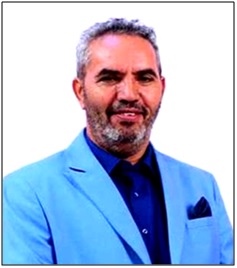CAROTID-JUGULAR FISTULA FOLLOWING A BOMB EXPLOSION: A CASE STUDY OF RARE FISTULA
Keywords:
Common carotid artery (CCA), Internal jugular vein (IJV), Carotid-Jugular Fistula (CJF), CT AngiogramAbstract
Background: Traumatic arteriovenous fistula (TAVF) is a rare vascular injury, usually caused by blast trauma and is on the rise in Yemen due to the ongoing war there for 14 years. This report describes a case of TAVF that occurred 5 days before the patient sought help and presented to the hospital.
Case presentation: A 16-year-old male with unknown past medical history presented five days after a bomb blast with penetrating trauma to the second zone of the neck. Physical examination revealed a tremor over the site of injury, suggestive of vascular injury, but the patient had no active bleeding, neurologic deficit, or expansive hematoma. Computed tomography (CT) angiography findings were critical in confirming a traumatic arteriovenous fistula and guiding the surgical approach for exploration and repair. Surgical exploration identified a carotid-jugular fistula between the posterolateral common carotid artery and the medial internal jugular vein. Computed tomography angiography findings confirmed successful closure of the fistula with preservation of vascular integrity and no immediate postoperative complications.
Conclusion: This case report describes the successful surgical management of a rare carotid-jugular fistula after a bomb blast. The positive outcomes, including preservation of neurological function and vascular integrity, highlight the importance of prompt surgical intervention and the potential for excellent recovery in traumatic vascular injuries.

Peer Review History:
Received 2 December 2024; Reviewed 8 January 2025; Accepted 16 February; Available online 15 March 2025
Academic Editor: Dr. Sally A. El-Zahaby , Pharos University in Alexandria, Egypt, sally.elzahaby@yahoo.com
, Pharos University in Alexandria, Egypt, sally.elzahaby@yahoo.com
Reviewers:
 Dr. Rana Ahmed MohamedEl-Saied El-Fitiany, Ahram Canadian University, Giza, Egypt, marmarelfitiany@gmail.com
Dr. Rana Ahmed MohamedEl-Saied El-Fitiany, Ahram Canadian University, Giza, Egypt, marmarelfitiany@gmail.com
 Dr. Razan Hani Amin Haddad, Jordan University of Science and Technology, Jordan, razanhh@yahoo.com
Dr. Razan Hani Amin Haddad, Jordan University of Science and Technology, Jordan, razanhh@yahoo.com
Downloads

Published
How to Cite
Issue
Section

This work is licensed under a Creative Commons Attribution-NonCommercial 4.0 International License.









 .
.